Essay on Swami Vivekananda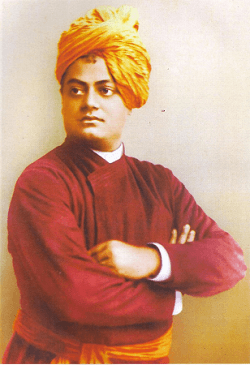
Swami Vivekananda, originally called Narendranath Datta, was a famous nationalistic leader. Vivekananda was born in Kolkata on January 12, 1863, as one of the eight children of Vishwanath Datta and Bhuvaneshwari Devi. Vivekananda's father, Vishwanath Datta, was highly educated and proficient in English & Persian. He worked as a favourable lawyer there in Calcutta High Court. He played a significant role in colonial India's nationalism and the contemporary Hindu reform movements. Vivekananda created the Ramakrishna Math and the Ramakrishna Mission. Vivekananda was attracted to spirituality and was born in Calcutta into an elite Bengali Kayastha family. He was motivated by his guru, Ramakrishna, who taught him that since all living things are manifestations of the holy soul, serving humanity might satisfy God and humanity. He eventually travelled to the United States as India's representative in the 1893 Assembly of the World's largest Grand Religions. Vivekananda offered hundreds of public and private seminars and presentations throughout the U.S., England, and Europe to propagate Hindu philosophy's teachings. Early Life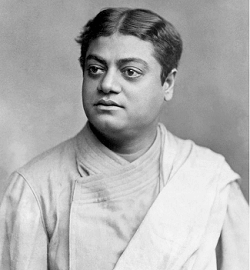
On the Makar Sankranti holiday on January 12 1863, Vivekanand was born in a Bengali family. He completed his childhood under the supervision of his father and mother. Narendranath Datta was also known as Naren and Narendra in his family. At that time of his childhood, he lived with his family in Gourmohan Mukherjee Street in Kolkata, known as Calcutta. Vivekananda's father, Vishwanath Datta, used to be a prosecutor in the Kolkata High Court. His mother, Bhubaneswari Devi, had been a dedicated homemaker. Narendra's father had a progressive, logical outlook, while his mother had a devout temperament, both of which influenced his way of thinking and personality. EducationFrom an early age, Narendranath was fascinated by religion and liked to perform meditations in front of pictures of gods like Shiva, Rama, Sita, and Mahavir Hanuman. He was also fascinated by Hindu scriptures such as the Veda, Hindu epics, Gita, Ramayana, Mahabharata, and Scriptural texts. At eight, Narendranath joined the Metropolitan Institute of Ishwar Chandra Vidyasagar, where he attended school until his parents relocated to Raipur in 1877. Narendra had training in Indian classical music and routinely engaged in organized events, sports, and physical activity. Narendra was quite good at learning or remembering things because of his amazing memory. He also had an excellent reading speed. He once recited several chapters of Pickwick Paper verbatim in a speech. Multiple scenarios have indeed been given as examples. Followers of Swami Vivekananda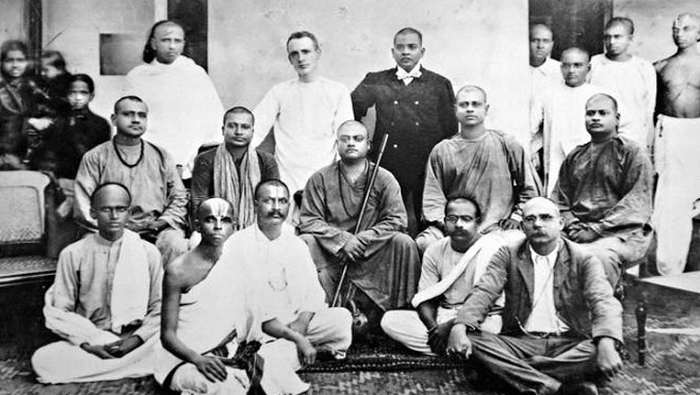
Swami Vivekananda drew many admirers and supporters in Europe and the United States, such as William James, Josephine MacLeod, Josiah Royce, Nikola Tesla, Lord Kelvin, Harriet Monroe Ella Wheeler Wilcox, Sarah Bernhardt, Emma Calvé, and Hermann Ludwig Ferdinand von Helmholtz. Swami Vivekananda provided property inside the hills southeast of San Jose, California, to create a Dharma academy for pupils during his time in the United States. He called it the liberty camp or Santi Bhavan. The Swami Vivekananda chant also inspired Christina Greenside of Detroit, and she turned into Sister Christine and created close father-daughter connections. Swami Vivekananda's work was extended across India. He spoke with his fans daily, giving advice and financial assistance. His letters at that time were aggressively written & showed the social welfare agenda. Travel in IndiaFor 5 years, Swamiji travelled throughout India, touring academic institutions and learning about diverse religious rituals and demographic norms. He developed compassion for such people's emotions and impoverishment and resolved to move the country forward. Travel to Other NationAround May 31, 1893, Swamiji embarked upon the journey towards the Western side, addressing Nagasaki, Kobe, Yokohama, Osaka, Kyoto, and Tokyo through Japan, China, and Canada on the way to the US, arriving in Chicago on July 30, 1893. In September 1893, the Gathering of Nations was convened here. Vivekananda was always eager to participate, though he was unhappy to know that someone not belonging to a legitimate organization would not be admitted as a representative. So, Vivekananda met Harvard University Professor John Henry Wright, who invited Vivekananda to speak at the college. Second Visit to West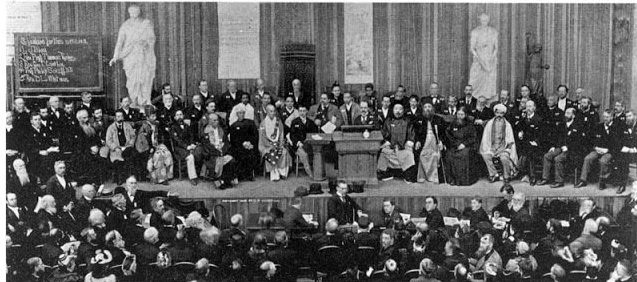
Despite his physical ailments, Vivekananda went to the Western side in June 1899, accompanied by Sister Nivedita with Swami Turiyananda. Vivekananda then travelled to France, Austria, Istanbul, Athens, and Egypt. His Paris seminars focused on the devotion of the lingam and the integrity of Hindu Mythology. Despite not being able to join the Congress of Religions in Japan in 1901 owing to poor conditions, Vivekananda undertook pilgrimages to Bodhgaya and Varanasi. Life as MonkRamakrishna, who had previously been battling throat cancer, became gravely ill in 1885. Sri Ramakrishna subsequently relocated to Shyampukur in Culcutta in September 1885, while Vivekananda acquired a rented mansion in Cossipore some few months later. 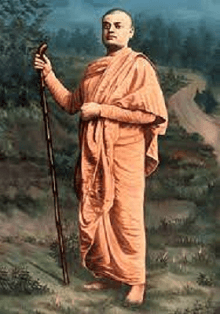
Following Sri Ramakrishna's death, approximately 15 of his students, notably Narendranath, started to reside within a crumbling structure at Baranagar, Northern Calcutta, which had been dubbed Ramakrishna Math, Ramakrishna's spiritual community. The fraternity survived handouts given willingly by clients while holy pleading, known as Madhukar, also practised relaxation techniques. Vivekananda left the Math in 1886 to go on a walking journey throughout India like a Parivrajak. He watched the hardships that common citizens experienced and their sicknesses and was determined to dedicate his entire life to reducing the pain. Swami Vivekananda in Meditation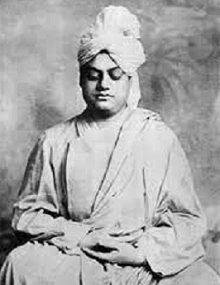
Swami Vivekananda's lifestyle and thoughts were heavily influenced by meditation. He has been engaged in yoga since when he was a youngster. Ramakrishna, his instructor, discovered a meditation, Siddha. Vivekananda is acknowledged for popularising meditation within the Western hemisphere. He extensively explored meditation, its aim, and its process in his book Raja Yoga and talks. He defined meditation as a link between the human spirit and God. Meditation and Yoga in his LifeHistoric Hindu Wise men invented yoga that provided insight into the wide range of India's spiritual cultures. Vivekananda described meditation and yoga as a method of self-evaluation of all ideas in the brain. His speeches and practical teachings spread it all over the World. Vivekananda's concentration is performed on two principles: Yoga and meditation, which is a realistic and spiritual method, and Vedanta concentration, which is a theoretical and divine method. He had a great passion for meditation and yoga since early childhood, so he used to concentrate in front of representations of idols, including Shiva, Lord Ram, and Sita. When Vivekananda was practising yoga with a friend, a snake came out of nowhere, which startled Narendra's friends, who ran away. But Narendra was so engrossed in his concentration that he did not even know about the snake. He attended yoga instruction from Ramakrishna as a trainee from 1881 to 1886, which strengthened his concentration ability. Narendra desired to achieve Nirvikalpa Dhyana, the ultimate level of meditation and concentration and asked Ramakrishna to assist him. He also informed him that through helping humanity, he might reach a higher condition, given that everything is God's expression. Facts about Swami Vivekananda
Philosophy of Swami VivekanandaSwami Vivekananda's teachings and worldview combine numerous elements of Hindu thinking, especially traditional Yoga and Vedas, with western teachings and secular humanism. The Brahmo Society, as well as western Communitarianism and occultism, impacted Vivekananda, as did his mentor Ramakrishna, who saw the Real and nominal truth as equal or close parts of the identical holistic truth. While combining and promoting different streams of Hindu philosophy, more particularly traditional Yoga and Vedas, Vivekananda was affected by various concepts such as equality, which he learned through a Unitarian missionary who worked with the Brahmo Samaj. Legacy of Swami VivekanandaVivekananda was a key figure in Modernity, a modernized version of chosen components of Hinduism in accordance with western academic systems, particularly Transcendentalism, New Thinking, and Philosophy. His modern interpretation was and continues to be very effective, fostering a new appreciation and acceptance of the Hindu religion both within and beyond India, and served as the chief factor for yoga's cheerful reception. NationalismVivekananda was recognized by Sri Aurobindo to be the individual who intellectually awoke India. Several Indian philosophers and leaders were impacted by his patriotic beliefs. Vivekananda made reference to the nation's economy and emphasized that relieving such distress was a requirement for nation enlightenment. Life Lesson
DeathOn July 4, 1902, Vivekananda got up early, came to the convent of Belur Math and contemplated for 3 hours as in his regular schedule. Vivekananda later returned to his room at 7:00 p.m., begging to avoid being disturbed, and passed at 9:20 p.m. when doing meditation. Message from HimHe reminded everyone that learning is the most effective method to ensure the destiny and progress of humanity as a whole. On the other side, illiteracy is a misfortune for humanity. He also encouraged pupils to participate in activities and games to enhance their muscular stamina. Conclusion of his LifeSwami Vivekananda thought that serving humanity ought to be selfless since serving humanity equalled serving God. He constantly laboured towards the well-being of society, in service to the poor and needy, & gave his all for the nation.
Next TopicEssay on Yoga
|
 For Videos Join Our Youtube Channel: Join Now
For Videos Join Our Youtube Channel: Join Now
Feedback
- Send your Feedback to [email protected]
Help Others, Please Share









